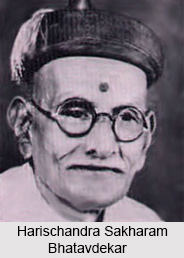 History of Indian cinema dated back to the year 1896. The Lumiere Brothers first demonstrated the art of cinema to the sub continent. Bombay was the first Indian city that screened Cinematography, six short films by the Lumiere Brothers. The success of these films led to the screening of more foreign films, for instance, ‘Vitagraph’ by James B. Stewart and ‘Moto-Photoscope’ by Ted Hughes. In other words introduction of cinema in India took place with the aid of the colonisers. The Indian film industry is the oldest and the largest in the world with over 1200 movies released annually.Transformation from Silent Films to Talkies
History of Indian cinema dated back to the year 1896. The Lumiere Brothers first demonstrated the art of cinema to the sub continent. Bombay was the first Indian city that screened Cinematography, six short films by the Lumiere Brothers. The success of these films led to the screening of more foreign films, for instance, ‘Vitagraph’ by James B. Stewart and ‘Moto-Photoscope’ by Ted Hughes. In other words introduction of cinema in India took place with the aid of the colonisers. The Indian film industry is the oldest and the largest in the world with over 1200 movies released annually.Transformation from Silent Films to TalkiesA kaleidoscopic view of History of Indian Cinema includes the pioneering efforts of Save Dada (Harischandra Sakharam Bhatavdekar). He made two short films as early as in 1897. Initial short films in India were directed by Hiralal Sen, starting with ‘Flower of Persia’ (1898). In 1900 the entire Indian entertainment sector underwent huge changes and the emergence of Dadasaheb Phalke took Indian cinema to new heights. Thus, breaking the path of the silent era in films, ‘Raja Harishchandra’, was released in 1913. During this time the main sources for Indian films were the mythological texts. The rapid growth of the Indian cinema led to the end of the silent era and ushered in the era of the talkies. The latter introduced the Indian cinema in a completely new way to the audiences. Now, one could hear the actors and actresses talking, laughing, singing and crying. Initially films were made in Hindi, Tamil, Bengali and Telugu and these films proved to be phenomenal successes.
 Revolution of Indian Cinema
Revolution of Indian Cinema1930s and 1940s witnessed the rise of film personalities, such as, Debaki Bose, Chetan Anand, S.S. Vasan, Nitin Bose and others. Their contributions helped the Indian cinema to grow further. By this time apart from Bombay (Mumbai), the film industry shaped up well in down south too. The Tamil, Telugu and Kannada film industries were making indigenous films as well. By late 1940s films in India were made in various languages but the religious influence was predominant. With struggle for independence the entire scenario altered. Indian cinema then saw films based on the erstwhile contemporary social issues. Movies no longer were limited to the periphery of entertainment; they were now potent instruments to educate the masses as well.
For more, visit the link below: